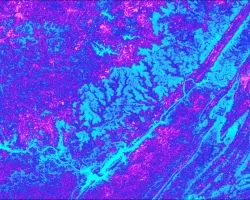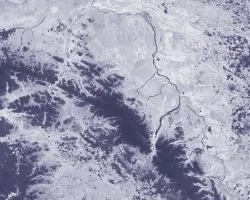
Between 2000 and 2020, Fairfax County, Virginia experienced extreme weather events that caused severe flooding and degradation of roads, businesses, and other public property. A single flood event on July 8th, 2019 resulted in $14.8 million in damages. These flood events routinely impact the community, often resulting in power outages, school closures, and downed trees. The Fairfax County Department of Public Works and Environmental Services partnered with DEVELOP to explore how remotely sensed data could be integrated to support its current flood mitigation efforts. This project used environmental factors such as elevation, slope, and topographic wetness index from Earth observation derived data to map flood susceptibility. We utilized Landsat 5 Thematic Mapper (TM), Landsat 7 Enhanced Thematic Mapper Plus (ETM+), Landsat 8 Operational Land Imager (OLI), Sentinel-1 C-Band Synthetic Aperture Radar (C-SAR), and Sentinel-2 Multispectral Instrument (MSI) to map historic flooding events in Fairfax County. These maps will support flood management practices for the Fairfax County Department of Public Works and Environmental Services through the integration of remotely sensed data. Our results show that developed areas in the county are more susceptible to flooding, coinciding with analysis of flood factors, which indicated that imperviousness and tree canopy were the most influential drivers in flood susceptibility. Other results show that using Earth observations to map historical flooding is limited in urban areas due to false positives from SAR imagery between water and shadows. Further research is necessary to evolve the historical flood mapping technique if Earth observations are to be incorporated in future historical flood analysis.



